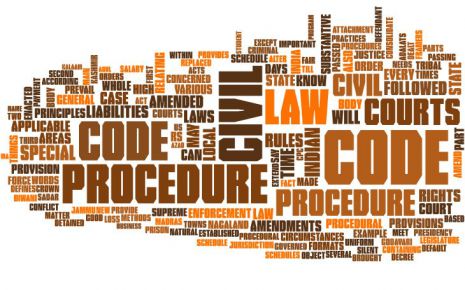Robbery and Dacoity: Analysing Differences
Robbery:
Every instance of robbery involves either theft or extortion. Robbery can be committed by one or more than one but less than five persons.Theft can be classified as 'robbery' if the offender intentionally causes or attempts to cause death, injury, or wrongful restraint to another person in order to carry out the theft, or during the theft, or while attempting to escape with the stolen property. The offender may also induce fear of immediate death, injury, or wrongful restraint in order to carry out the theft.
Extortion can be considered as 'robbery' if the offender commits the act in the presence of the victim and induces fear of immediate death, injury, or wrongful restraint in order to extort something from the victim or someone else. This fear must be present at the time of the extortion and must result in the victim immediately handing over the desired item.
Dacoity:
On the other hand, dacoity, a term primarily used in Indian law, refers to a more organized form of armed robbery committed by a group of five or more people. Due to the larger number of participants, dacoity typically involves a higher level of violence or intimidation. Although both offenses involve theft and the use of force or threat, dacoity stands out for its larger scale, organization, and number of individuals involved.Differences:
The differences between Robbery and Dacoity are explained below:
- Robbery is defined under section 390 IPC and Dacoity under section 391 IPC.
- The primary contrast between the crimes of robbery and dacoity lies in the number of individuals involved. While an individual or less than five persons can carry out robbery, a minimum of five people must participate in dacoity.
- Robbery is an aggravated form of theft and extortion, where force is used in the commission of the crime and the offender threatens to kill, cause hurt or wrongful confinement. Dacoity, which is a higher form of robbery, is a crime wherein at least 5 people working together perpetrate it.
- Although robbery may or may not involve the use of weapons, dacoity specifically demands that the perpetrators possess and use deadly weapons.
- The crime of dacoity is typically viewed as a more grave offense because it involves the participation of multiple perpetrators and the use of deadly weapons. On the other hand, although still a serious crime, robbery may not be regarded with the same level of gravity as dacoity.
- The act of dacoity often requires a greater level of organization and collaboration among the perpetrators due to the involvement of a larger number of people and the necessity to coordinate the use of weapons. On the other hand, robbery may involve less preparation and can be carried out by individuals or smaller groups without the same degree of coordination.
- The organized and violent nature of dacoity can greatly affect society by creating fear and insecurity among the public. On the other hand, although robbery also causes harm to victims, it may not have as significant an impact on society as dacoity does.
- Assembly to commit dacoity is punishable (402 IPC), but assembly to commit robbery is not an offence.
- The act of robbery encompasses a wide range of crimes that are considered to be more severe versions of theft or extortion. On the other hand, dacoity is a distinct type of robbery that involves a minimum of five perpetrators. As a result, while all dacoities are classified as robberies, not all robberies meet the requirements to be classified as dacoities.
- Robbery is a cognizable bailable and not a compoundable offence and thus can be handled by Judicial Magistrate, First Class. Dacoity is a cognizable, non-bailable and non-compoundable offence and is tried by a Sessions Judge.
- Robbery is punishable only during attempt to commit a crime and accomplishment of the crime. Dacoity is punishable for any stage of the crime i.e. preparation to commit a dacoity is also a crime.
- The punishments for robbery are stated in Section 392 of the Indian Penal Code. Those who are convicted of this crime will be subjected to a harsh imprisonment of a maximum of ten years and also have to pay a fine. Furthermore, if the robbery transpires on a highway during the hours of sunset and sunrise, the imprisonment sentence could be prolonged to fourteen years. In the event that an individual causes harm while committing or attempting to commit robbery, both that individual and any other person who was involved in the robbery will be subject to a punishment of either life imprisonment or a term of rigorous imprisonment that could last up to ten years, and may also be required to pay a fine, according to section 394 IPC.
According to Section 395 of the Indian Penal Code, dacoity is punishable by law. Anyone found guilty of committing dacoity may face a life sentence or up to ten years of rigorous imprisonment, in addition to a fine. The offense of dacoity with murder is addressed in Section 396 of the Indian Penal Code. It mandates that those who engage in dacoity and result in the death of an individual shall face punishment of either death or life imprisonment or may be subjected to a fine or rigorous imprisonment for a maximum of ten years, along with the possibility of being fined.
Conclusion:
The Indian Penal Code considers robbery and dacoity as severe criminal acts that warrant punishment. Robbery entails forcefully or threateningly taking property from an individual, while dacoity involves a more organized form of robbery committed by a group of armed individuals. Both offences carry significant legal repercussions, with the latter often resulting in harsher penalties due to its planned and cooperative nature.
Not only do these crimes violate the rights of victims, but they also instill a sense of fear and insecurity within communities. It is crucial for law enforcement agencies to take necessary measures to prevent and prosecute these offences to maintain public safety and uphold the rule of law in India.
By implementing various proactive tactics such as heightened patrols in areas with high crime rates, utilizing surveillance cameras to monitor vulnerable spots, promoting community involvement to gather information and establish trust, maintaining criminal intelligence and keeping watch over active criminals, the police can effectively prevent robberies and dacoities.
Further measures such as conducting thorough investigations and prosecuting previous cases can also act as a deterrent, while specifically targeting organized crime networks through enforcement actions can disrupt their activities. Additionally, providing training to officers in crime prevention techniques and fostering collaboration with other law enforcement agencies can improve the overall effectiveness of preventing these types of crimes.
Written By: Md.Imran Wahab, IPS, IGP, Provisioning, West Bengal
Email: [email protected], Ph no: 9836576565
Law Article in India
Legal Question & Answers
Lawyers in India - Search By City
LawArticles
How To File For Mutual Divorce In Delhi

How To File For Mutual Divorce In Delhi Mutual Consent Divorce is the Simplest Way to Obtain a D...
Increased Age For Girls Marriage

It is hoped that the Prohibition of Child Marriage (Amendment) Bill, 2021, which intends to inc...
Facade of Social Media

One may very easily get absorbed in the lives of others as one scrolls through a Facebook news ...
Section 482 CrPc - Quashing Of FIR: Guid...

The Inherent power under Section 482 in The Code Of Criminal Procedure, 1973 (37th Chapter of t...
The Uniform Civil Code (UCC) in India: A...

The Uniform Civil Code (UCC) is a concept that proposes the unification of personal laws across...
Role Of Artificial Intelligence In Legal...

Artificial intelligence (AI) is revolutionizing various sectors of the economy, and the legal i...








Please Drop Your Comments